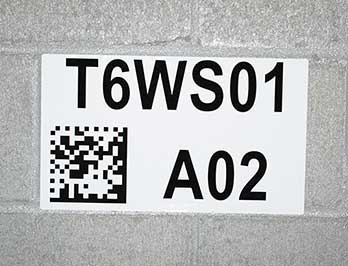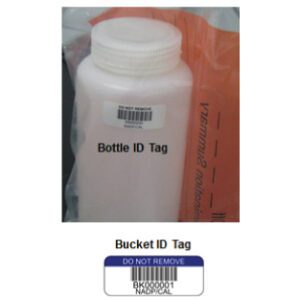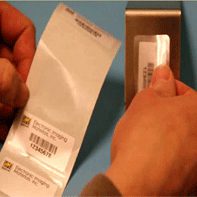One of our customers is a perfect example of adjusting to change and they are using new technology to help them continue their growth well into the future. They needed a way to keep track of everything coming and going in their dockside warehouses. With millions of dollars of goods, they wanted a way to quickly save and link a lot of data pertaining to the contents in their storerooms. The solution was DataMatrix 2D barcode labels printed with 11 alpha-numeric characters in a whopping 248 mil X dimension―but measuring a meager 4 square inches! Granted their labels were big―approximately 8” by 14”―but that was so we could include large human readable information easily read from long distances. Printed in sets of two, the labels were mounted to rugged plastic placards (front and back) and suspended above inventory to be visible in two directions.

With lineal barcodes, the more characters that are encoded, the longer the barcode becomes. In the case of warehouse labels, the density of the barcodes is typically increased to improve scanning distance. (Had we printed this customer’s labels in Code 128 with a mere 100 mil NB size for instance, the barcode alone would have had to be at least 16” long!)
What is most amazing however is that our customer was able to scan their DataMatrix barcodes anywhere from 6 to 50 feet―WITHOUT the use of retro-reflective materials! Normally reflective labels with embedded glass particles are needed to make the barcodes “pop” and reflect light back from a long-distance laser scanner. Instead, EIM could offer them standard white poly labels at a significantly lower cost than reflective labels.

2D codes like DataMatrix do not require high contrast printing or reflectivity since they aren’t “read” by a scanner, but rather are analyzed as a complete image. The customer’s mobile computers (scanners) had integrated digital cameras that can read 2D codes in any orientation and by using DataMatrix they can include much more information within their barcodes. Information such as origin, quantity, product description, weight, etc. can be encoded and be as detailed or simplistic as necessary. This proved to be a great solution for them and it’s helping them keep up with the fast-growing needs and demands of international commerce.




